리눅스 서버 용량을 확인하는 명령어는 2가지가 있다. df, du 명령어가 리눅스를 대표하는 용량 확인 명령어이다. 사용방법도 쉬우며, 레드햇 리눅스 데비안 리눅스 상관없이 사용할 수 있는 명령어이기 때문에 꼭 알아두면 좋다.
리눅스 서버를 운영하거나 리눅스를 사용중에 있다면 항상 용량 확인을 습관적으로 할 수 밖에 없어서 df, du 명령어를 기본적으로 알고 있으면 좋다.
리눅스 df 명령어 사용법
1) 서버 전체 용량 보기 좋게 확인하기
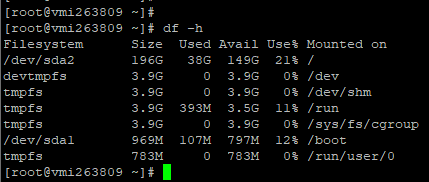
df -h
가장 많이 사용하는 명령어이다. 현재 리눅스 서버의 전체 디스크용량을 확인할 수 있으며 G,M,K별로 용량 구분을 해서 확인할 수 있는게 특징이다.
2) 모든 디스크 용량 세부적으로 확인
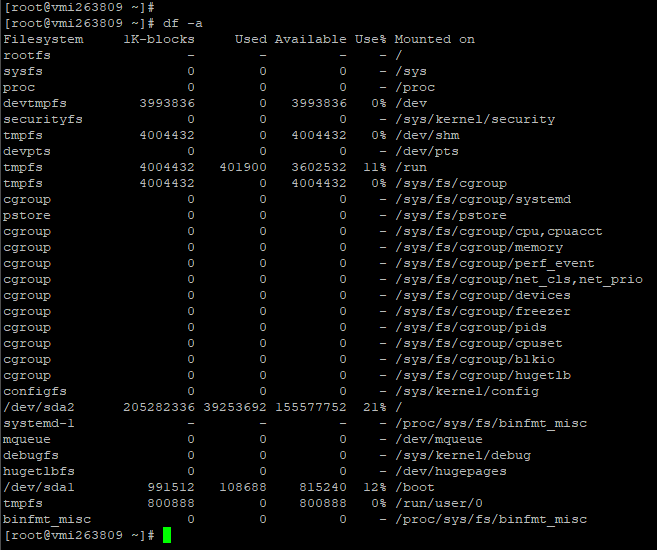
df -a
리눅스 파일 시스템의 모든 용량을 세부적으로 확인할 수 있다.
3) 옵션 없이 사용
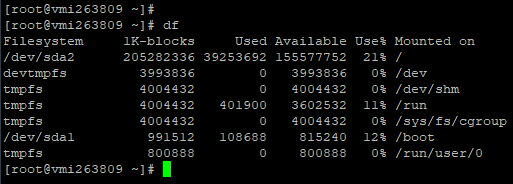
df
옵션 없이 가장 기본이 되는 명령어이다. 다소 육안으로 볼때 디스크 용량을 확인하는것이 부담스럽다. 하지만 세밀하게 용량 확인이 가능하다는 장점이 있다.
4) 1M당 사이즈로 보기
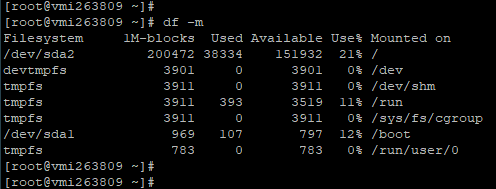
df -m
1M당 사이즈를 정리해서 보여주는 방식이다. 기본옵션보다는 보기 편하다.
대략 이정도의 명령어가 있으며 가장 많이 사용하는 명령어 옵션은
df -h
이것만 알고 있으면 된다.
5) df 명령어 옵션
Usage: df [OPTION]… [FILE]…
Show information about the file system on which each FILE resides,
or all file systems by default.
Mandatory arguments to long options are mandatory for short options too.
-a, –all include pseudo, duplicate, inaccessible file systems
-B, –block-size=SIZE scale sizes by SIZE before printing them; e.g.,
‘-BM’ prints sizes in units of 1,048,576 bytes;
see SIZE format below
–direct show statistics for a file instead of mount point
–total produce a grand total
-h, –human-readable print sizes in human readable format (e.g., 1K 234M 2G)
-H, –si likewise, but use powers of 1000 not 1024
-i, –inodes list inode information instead of block usage
-k like –block-size=1K
-l, –local limit listing to local file systems
–no-sync do not invoke sync before getting usage info (default)
–output[=FIELD_LIST] use the output format defined by FIELD_LIST,
or print all fields if FIELD_LIST is omitted.
-P, –portability use the POSIX output format
–sync invoke sync before getting usage info
-t, –type=TYPE limit listing to file systems of type TYPE
-T, –print-type print file system type
-x, –exclude-type=TYPE limit listing to file systems not of type TYPE
-v (ignored)
–help display this help and exit
–version output version information and exit
Display values are in units of the first available SIZE from –block-size,
and the DF_BLOCK_SIZE, BLOCK_SIZE and BLOCKSIZE environment variables.
Otherwise, units default to 1024 bytes (or 512 if POSIXLY_CORRECT is set).
SIZE is an integer and optional unit (example: 10M is 10*1024*1024). Units
are K, M, G, T, P, E, Z, Y (powers of 1024) or KB, MB, … (powers of 1000).
FIELD_LIST is a comma-separated list of columns to be included. Valid
field names are: ‘source’, ‘fstype’, ‘itotal’, ‘iused’, ‘iavail’, ‘ipcent’,
‘size’, ‘used’, ‘avail’, ‘pcent’, ‘file’ and ‘target’ (see info page).
GNU coreutils online help: <http://www.gnu.org/software/coreutils/>
For complete documentation, run: info coreutils ‘df invocation’
리눅스 du 명령어 사용법
1) 디렉토리별 간편하게 총 용량 확인
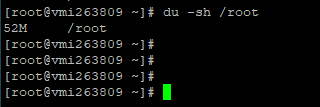
du -sh /root/
/root 디렉토리의 총 용량을 한 번에 확인할 수 있는 명령어다.
2) 하위디렉토리별 각각의 용량 확인

du -ch /tmp/
/tmp 하위디렉토리의 용량을 각각 확인할 수 있으며 total 용량까지도 확인이 가능하다.
3) du 명령어 옵션 사용법
Usage: du [OPTION]… [FILE]…
or: du [OPTION]… –files0-from=F
Summarize disk usage of each FILE, recursively for directories.
Mandatory arguments to long options are mandatory for short options too.
-0, –null end each output line with 0 byte rather than newline
-a, –all write counts for all files, not just directories
–apparent-size print apparent sizes, rather than disk usage; although
the apparent size is usually smaller, it may be
larger due to holes in (‘sparse’) files, internal
fragmentation, indirect blocks, and the like
-B, –block-size=SIZE scale sizes by SIZE before printing them; e.g.,
‘-BM’ prints sizes in units of 1,048,576 bytes;
see SIZE format below
-b, –bytes equivalent to ‘–apparent-size –block-size=1’
-c, –total produce a grand total
-D, –dereference-args dereference only symlinks that are listed on the
command line
-d, –max-depth=N print the total for a directory (or file, with –all)
only if it is N or fewer levels below the command
line argument; –max-depth=0 is the same as
–summarize
–files0-from=F summarize disk usage of the
NUL-terminated file names specified in file F;
if F is -, then read names from standard input
-H equivalent to –dereference-args (-D)
-h, –human-readable print sizes in human readable format (e.g., 1K 234M 2G)
–inodes list inode usage information instead of block usage
-k like –block-size=1K
-L, –dereference dereference all symbolic links
-l, –count-links count sizes many times if hard linked
-m like –block-size=1M
-P, –no-dereference don’t follow any symbolic links (this is the default)
-S, –separate-dirs for directories do not include size of subdirectories
–si like -h, but use powers of 1000 not 1024
-s, –summarize display only a total for each argument
-t, –threshold=SIZE exclude entries smaller than SIZE if positive,
or entries greater than SIZE if negative
–time show time of the last modification of any file in the
directory, or any of its subdirectories
–time=WORD show time as WORD instead of modification time:
atime, access, use, ctime or status
–time-style=STYLE show times using STYLE, which can be:
full-iso, long-iso, iso, or +FORMAT;
FORMAT is interpreted like in ‘date’
-X, –exclude-from=FILE exclude files that match any pattern in FILE
–exclude=PATTERN exclude files that match PATTERN
-x, –one-file-system skip directories on different file systems
–help display this help and exit
–version output version information and exit
Display values are in units of the first available SIZE from –block-size,
and the DU_BLOCK_SIZE, BLOCK_SIZE and BLOCKSIZE environment variables.
Otherwise, units default to 1024 bytes (or 512 if POSIXLY_CORRECT is set).
SIZE is an integer and optional unit (example: 10M is 10*1024*1024). Units
are K, M, G, T, P, E, Z, Y (powers of 1024) or KB, MB, … (powers of 1000).
GNU coreutils online help: <http://www.gnu.org/software/coreutils/>
For complete documentation, run: info coreutils ‘du invocation’